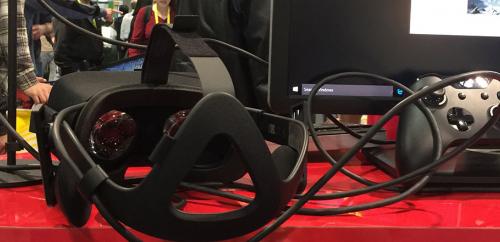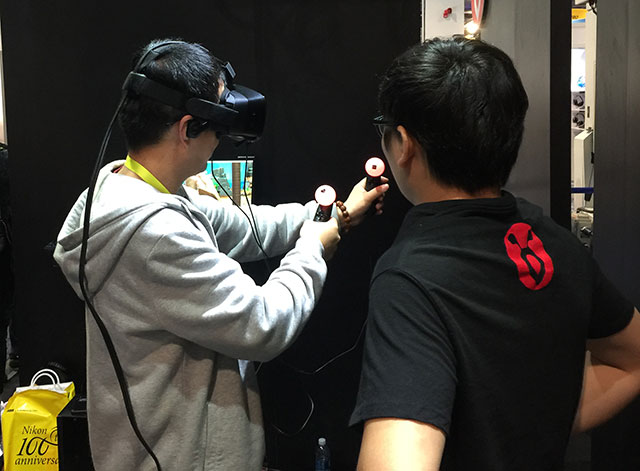At the massive Las Vegas Convention Center, centered in one of the enormous cardinal halls, is collected most of the virtual reality and augmented reality technology at CES 2017. It makes sense that they share space because the technologies that run them and their primary consumer applications are so similar. But this section isn’t called Virtual Reality & Augmented Reality or VR & AR. It’s called Gaming & Virtual Reality. And this tells you everything you need to know about VR at CES and why the future of virtual reality is so completely different from that of 3D television.
Home 3D television entered the consumer market about six years ago. It was the toast of CES 2010. Six years later and while many TVs are still sold with 3D technology built in, it’s not a popular feature. Fewer TVs are being designed with 3D applications in mind, instead focusing on higher quality 2D experiences. This fall from grace is the result of a number of factors including limited programming and middling quality. Perhaps the biggest crime was most 3D TVs required uncomfortable, ungainly, and wildly uncool 3D glasses. It had a bright launch and all the love in the world, but it failed to take hold. ESPN quietly discontinued its 3D programming initiative in 2012. In less than three years, 3D TV was officially dubbed a fad.
Now the big scoop is virtual reality and it’s technology sister augmented reality. Last year Oculus launched Rift, its consumer VR system, to great applause. Lines to experience the new product looped around the convention center floor. Some people loved it – others were skeptical. The skeptics pointed to 3D TV as an example of why virtual reality was sure to hit the fad bin. It was just a matter of time, they crowed. But they’re wrong. Here’s why:
First, all new consumer technologies require a grow-in period. They needs to enter the market, work out their kinks, discover their “killer app” and drop in price. This is how they become the new norm. For 3D TV’s, that cycle happened practically overnight. The technology became available and affordable quickly. ESPN offered live sports – an ideal application – in 3D almost immediately. Prices fell precipitously. But it didn’t grab on. People, for whatever reason, simply didn’t like it. VR hasn’t hit that cycle yet. It’s still in the “enter the market” phase. It’s moving significantly slower than 3D TVs, giving it the chance to work out kinks and design optimal applications at a more reasonable pace. This is a big advantage over 3D TV.
Second, virtual reality is a revolution in entertainment. 3D was an evolution. In the end, 3D TV was just a new way to do something we already do – sit on the couch and relax. And arguably it didn’t make the sitting and relaxing experience much better, just a little different. Virtual reality on the other hand is a profoundly unique way to experience entertainment. It’s immersive, surrounding, and thrilling. Like 3D, it’s not for everyone (there will always be some people who get motion sickness using VR and 3D) but it’s not an adjustment to something people already love – it’s a completely new thing. This fact alone gives VR a leg up.
Finally, VR is entering the market first as an add-on to gaming, not just an add-on to TV and movies. This is incredibly important for VR technology as a brand and, as indicated by how CES organizes their show floor, as a distinguishing feature from TV fads like 3D. Giving gamers, a generally tech-forward community, the chance to explore VR technology and work out the bugs before it hits major consumer markets is a monumental advantage. Plus, separating the technology from the TV bonanza that is the Las Vegas Convention Center main hall gives it a way to evolve without the pressure of instantly becoming the new centerpiece of every living room in America. VR is taking an important extra step in the technology grow-in period where it gets to be a toy – a just-for-fun product – before it becomes a must-have technology. 3D never had that chance.
This isn’t to say the future of TV, games, sports, and living rooms is definitely virtual realty. It may always be a “sometimes” technology. After all, sitting on the couch and chilling out in front of a beautiful 2D screen is pretty fantastic. But virtual reality is such a profoundly different experience, it’s such a unique technology, and it’s entering the market with such a well paced and rational approach, it’s hard to just chuck it in with other entertainment fads like 3D. It’s far better poised to become the next living room must-have technology than anything since high definition television. And we expect it will play a big part in how internet technology and TV entertainment evolves over the next ten years.


